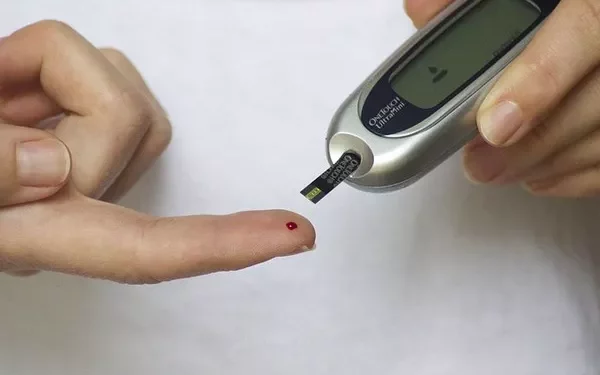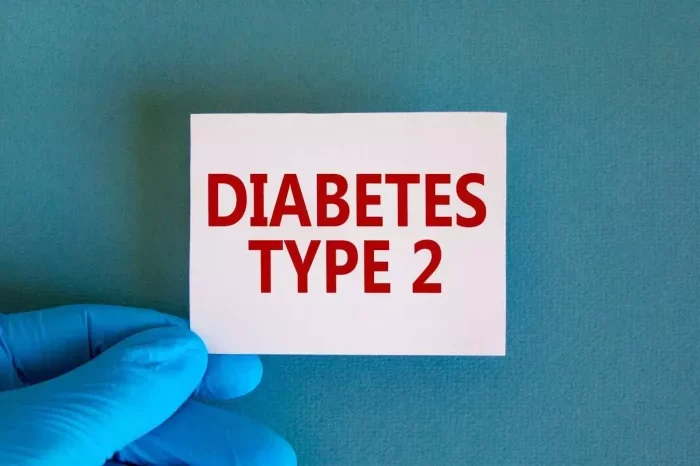Diabetes mellitus is a chronic metabolic disorder characterized by high blood glucose levels due to defects in insulin secretion, insulin action, or both. Managing diabetes effectively requires continuous monitoring of blood glucose levels, among which Hemoglobin A1c (HbA1c) has emerged as a critical indicator. This article delves into the optimal A1c level for diabetic patients, exploring the implications, target ranges, and factors affecting these levels.
What is A1c?
A1c, or Hemoglobin A1c, is a form of hemoglobin that is chemically linked to glucose. It provides an average blood glucose level over the past two to three months. This is because red blood cells, which carry hemoglobin, typically live for about 120 days. Thus, A1c levels reflect the cumulative glycemic history rather than day-to-day fluctuations.
How is A1c Measured?
A1c is measured as a percentage, indicating how much of the hemoglobin in the blood is glycated. For example, an A1c level of 6% means that 6% of the hemoglobin molecules are bound to glucose. The test is simple and can be performed during a routine check-up, requiring no special preparation.
Importance of A1c Measurement
Monitoring A1c levels is crucial for several reasons:
- Long-term Management: It helps in understanding the long-term effectiveness of diabetes management plans.
- Risk Prediction: It correlates with the risk of diabetes-related complications such as neuropathy, nephropathy, and retinopathy.
- Treatment Adjustment: Helps healthcare providers adjust medications and lifestyle recommendations.
The Optimal A1c Level
General Guidelines
For most adults with diabetes, the American Diabetes Association (ADA) recommends an A1c goal of less than 7%. However, this target may vary based on individual circumstances, including age, duration of diabetes, presence of comorbid conditions, and risk of hypoglycemia.
Personalized Targets
Young Adults and Those Newly Diagnosed
For younger individuals and those with a recent diagnosis of diabetes, a more stringent target of around 6.5% may be appropriate, provided it can be achieved without significant hypoglycemia or other adverse effects. These patients generally have fewer comorbidities and a longer life expectancy, making aggressive glycemic control more beneficial in preventing long-term complications.
Older Adults and Those with Comorbidities
For older adults, particularly those with multiple comorbidities or a history of severe hypoglycemia, a less stringent target, such as 7.5% to 8%, may be more appropriate. This approach balances the benefits of glycemic control with the risks associated with hypoglycemia and the potential impact on quality of life.
Special Populations
Children and Adolescents
In children and adolescents, the target A1c is generally less than 7.5%. The rationale here includes the avoidance of hypoglycemia, which can affect cognitive function and development, and the longer duration of disease they will experience.
Pregnant Women
For pregnant women with diabetes, stricter glycemic control is crucial to prevent complications for both the mother and the fetus. The target A1c is typically less than 6%, reflecting the need for tight control to avoid fetal malformations and other adverse outcomes.
Type 1 vs. Type 2 Diabetes
The optimal A1c target can also differ between Type 1 and Type 2 diabetes. In Type 1 diabetes, intensive insulin therapy aims to keep A1c levels as close to normal as possible, ideally below 7%, to prevent complications. In Type 2 diabetes, the approach may vary more, with a broader range of targets depending on individual patient factors.
Factors Influencing A1c Levels
Several factors can influence A1c levels, and understanding these can help in interpreting the results accurately and making informed management decisions.
Biological Factors
Genetics
Genetic variations can affect red blood cell lifespan and hemoglobin glycation, potentially influencing A1c levels independently of blood glucose control. Some individuals may naturally have higher or lower A1c levels.
Red Blood Cell Turnover
Conditions affecting red blood cell turnover, such as anemia, hemolysis, or recent blood transfusions, can alter A1c levels. Rapid turnover can lead to falsely low A1c levels, while slower turnover can result in higher readings.
Medical Conditions
Chronic Kidney Disease (CKD)
CKD can impact A1c accuracy. The presence of uremia can affect hemoglobin glycation and red blood cell lifespan, potentially leading to misleading A1c values.
Liver Disease
Liver diseases can alter glucose metabolism and hemoglobin synthesis, thereby affecting A1c levels. For instance, cirrhosis can lead to falsely low A1c levels due to anemia and altered glucose handling.
Medications
Certain medications can impact A1c levels. For example, iron supplements or erythropoietin used to treat anemia can alter red blood cell turnover, affecting A1c. Corticosteroids and some antipsychotic medications can raise blood glucose levels, thereby increasing A1c.
Lifestyle Factors
Diet, exercise, and overall lifestyle play significant roles in managing blood glucose levels and, consequently, A1c. A healthy diet rich in fiber and low in refined sugars, regular physical activity, and stress management are crucial components of diabetes care.
Implications of High A1c Levels
High A1c levels are associated with an increased risk of various diabetes-related complications. The higher the A1c, the greater the risk of both microvascular and macrovascular complications.
Microvascular Complications
Retinopathy
Diabetic retinopathy is a leading cause of blindness in adults. Studies have shown a direct correlation between high A1c levels and the risk of developing retinopathy. Tight glycemic control can significantly reduce the incidence and progression of this condition.
Nephropathy
Diabetic nephropathy is a major cause of chronic kidney disease and end-stage renal disease. High A1c levels contribute to the progression of kidney damage, and maintaining lower A1c levels can help preserve renal function.
Neuropathy
Peripheral and autonomic neuropathy are common complications of diabetes. High blood glucose levels can damage nerves, leading to symptoms like pain, tingling, and loss of sensation. Tight glycemic control can help prevent or delay the onset of neuropathy.
Macrovascular Complications
Cardiovascular Disease
Diabetes significantly increases the risk of cardiovascular diseases such as heart attack and stroke. Elevated A1c levels are linked to a higher incidence of these conditions. Managing blood glucose levels effectively can reduce the risk of cardiovascular events.
Strategies for Achieving Optimal A1c Levels
Achieving and maintaining optimal A1c levels requires a comprehensive approach involving lifestyle modifications, medications, and regular monitoring.
Lifestyle Modifications
Dietary Changes
A balanced diet that controls carbohydrate intake is crucial for managing blood glucose levels. Patients should focus on whole grains, lean proteins, healthy fats, and plenty of fruits and vegetables. Avoiding sugary beverages and processed foods can also help stabilize blood sugar levels.
Physical Activity
Regular physical activity improves insulin sensitivity and helps manage blood glucose levels. Both aerobic exercises, like walking or swimming, and resistance training, such as weightlifting, are beneficial. Patients should aim for at least 150 minutes of moderate-intensity exercise per week.
Weight Management
Maintaining a healthy weight can significantly improve blood glucose control. Weight loss, even in small amounts, can lead to improved insulin sensitivity and lower A1c levels.
Stress Management
Stress can impact blood glucose levels by increasing the production of cortisol, a hormone that raises blood sugar. Techniques such as mindfulness, meditation, and deep-breathing exercises can help manage stress and improve glycemic control.
Medications
Oral Hypoglycemics
For Type 2 diabetes, oral medications like metformin, sulfonylureas, and DPP-4 inhibitors are commonly used to lower blood glucose levels. Each class of medication works differently, and treatment plans are often tailored to individual needs.
Insulin Therapy
Insulin is essential for patients with Type 1 diabetes and for some with Type 2 diabetes. Various types of insulin are available, including rapid-acting, long-acting, and mixed formulations. Insulin regimens are customized based on blood glucose patterns and lifestyle.
GLP-1 Receptor Agonists and SGLT2 Inhibitors
These newer classes of medications for Type 2 diabetes not only help lower blood glucose levels but also offer cardiovascular and renal benefits. They can be used alone or in combination with other medications.
Regular Monitoring and Follow-Up
Self-Monitoring of Blood Glucose (SMBG)
Regular self-monitoring of blood glucose levels helps patients understand how their diet, activity, and medications affect their blood sugar. This information is crucial for making real-time adjustments to manage diabetes effectively.
Continuous Glucose Monitoring (CGM)
CGM systems provide real-time glucose readings throughout the day and night, helping patients and healthcare providers make more informed decisions about treatment adjustments. CGM is especially beneficial for those with Type 1 diabetes and for patients experiencing frequent hypoglycemia.
Routine Check-Ups
Regular check-ups with a healthcare provider are essential for ongoing diabetes management. These visits provide opportunities to review blood glucose logs, adjust medications, and address any complications or concerns.
Challenges in Achieving Optimal A1c Levels
While setting and achieving target A1c levels is a cornerstone of diabetes management, several challenges can complicate this process.
Hypoglycemia Risk
Aggressive glycemic control can increase the risk of hypoglycemia, particularly in patients using insulin or sulfonylureas. Hypoglycemia can be dangerous and may necessitate a more conservative A1c target.
Patient Adherence
Adherence to medication, diet, and lifestyle recommendations can be challenging for many patients. Factors such as financial constraints, psychological barriers, and lack of access to healthcare resources can impact adherence.
Individual Variability
Each patient’s response to treatment can vary widely due to genetic, physiological, and lifestyle factors. Personalized treatment plans are essential but can be complex to develop and maintain.
Access to Healthcare
Access to quality healthcare services, including medications, monitoring devices, and specialist care, is crucial for effective diabetes management. Socioeconomic disparities can create barriers to achieving optimal A1c levels.
Future Directions in A1c Monitoring and Management
The field of diabetes management is continually evolving, with ongoing research and technological advancements aimed at improving patient outcomes.
Advances in CGM Technology
Continuous improvements in CGM technology are making these devices more accurate, user-friendly, and accessible. Integration with smartphones and other digital health tools can enhance patient engagement and data sharing with healthcare providers.
Artificial Pancreas Systems
Artificial pancreas systems, which automate insulin delivery based on real-time glucose readings, represent a significant advancement in diabetes management. These systems can help maintain near-normal blood glucose levels with minimal user intervention.
Personalized Medicine
Research into genetic and biomarker-based approaches is paving the way for more personalized diabetes treatment. Tailoring interventions based on individual genetic profiles and other biomarkers can optimize glycemic control and reduce the risk of complications.
Telemedicine
Telemedicine has become increasingly important in managing chronic diseases like diabetes. Remote consultations, digital health apps, and online education resources can support patients in achieving and maintaining optimal A1c levels.
See also:How To Check Sugar Level At Home Without Meter
Conclusion
The optimal A1c level is a critical target in diabetes management, with significant implications for preventing complications and improving quality of life. While the general target for most adults with diabetes is an A1c of less than 7%, personalized goals are essential to account for individual variability and specific patient circumstances. Achieving these targets requires a comprehensive approach that includes lifestyle modifications, appropriate medication use, and regular monitoring. Despite the challenges, ongoing advancements in technology and personalized medicine hold promise for improving diabetes care and helping patients achieve better outcomes.
Related topics:



























